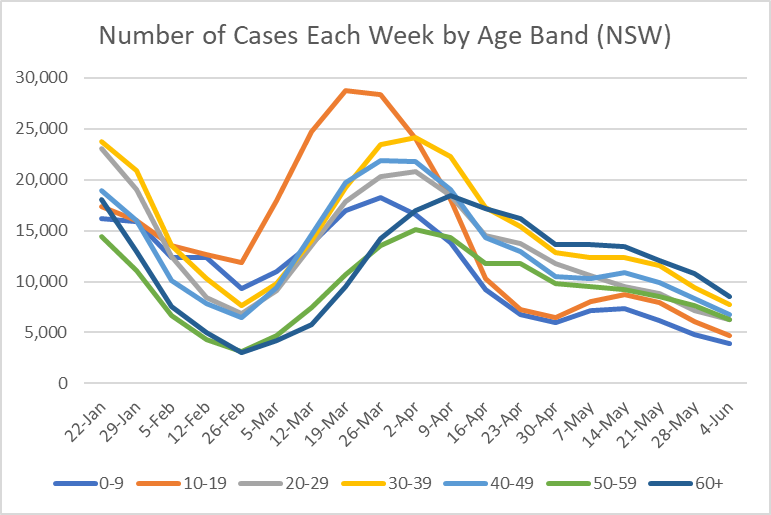
The Actuaries Institute has released our latest estimates of excess deaths in Australia. Main analysis uses ABS data to end-Feb 22. Estimate of COVID-19 only excess mortality for March-May 22 also included.
#ExcessDeaths #CovidAus
@ActuariesInst @Actuarialeye
#ExcessDeaths #CovidAus
@ActuariesInst @Actuarialeye
https://twitter.com/ActuariesInst/status/1534313609211564032
Total excess mortality for the first two months of 2022 is estimated to be 15% (+4,000 deaths); 18% in January and 13% in February. Importantly, this is measured relative to expected mortality had there been no pandemic. 

Deaths from all respiratory disease are a little lower than predicted.
(Note we have also shown expected deaths if experience follows 2020-21; this will be more interesting once we have data for the winter peak.)
(Note we have also shown expected deaths if experience follows 2020-21; this will be more interesting once we have data for the winter peak.)

Deaths from cancer are as predicted, but all other causes of death have experienced substantially more deaths than expected in Jan/Feb 22.
(Graphs for each individual cause can be found in the link in the first tweet.)
(Graphs for each individual cause can be found in the link in the first tweet.)

ABS data shows that in the months of Jan/Feb 2022, there were 401 deaths in people who were COVID-19 positive at death but where COVID-19 was not the primary cause of death. i.e. COVID-19 was a contributory factor in around 30% of the excess mortality from non-COVID-19 causes.
The ABS estimate of excess mortality for doctor-certified deaths only for Jan/Feb 22 (23%) is higher than ours (17%). This is because:
- the ABS predicted values incorporate the lower-than-expected mortality in 2020
- we allow for late-reported deaths.
- the ABS predicted values incorporate the lower-than-expected mortality in 2020
- we allow for late-reported deaths.

We estimate that COVID-19 deaths alone will result in excess mortality of around 6% (+2,500) for the months of March to May 2022.
(3,054 surveillance deaths less 15%-20% for deaths "with" COVID-19.)
(3,054 surveillance deaths less 15%-20% for deaths "with" COVID-19.)

Across the pandemic, our conservative estimate is that Australia had experienced 5,500 excess deaths by the end of May 2022 (an average excess mortality rate of about 1% to 1.5% over the pandemic). 

The rest of this thread talks about how we have set our baseline to estimate predicted deaths.
*********
We decided to continue to estimate our baseline "in the absence of a pandemic", making measurement and analysis of excess mortality more meaningful.
*********
We decided to continue to estimate our baseline "in the absence of a pandemic", making measurement and analysis of excess mortality more meaningful.
Until now, we have used the 2015-19 years as the basis for our projections, but these years are getting old.
However we cannot use the 2020-21 years without adjustment as they are not "pre-pandemic". At the same time, it is hard/impossible to separate out pandemic effects.
However we cannot use the 2020-21 years without adjustment as they are not "pre-pandemic". At the same time, it is hard/impossible to separate out pandemic effects.
As such, we have:
1. not included any COVID-19 deaths in the baseline; these would not exist in the absence of the pandemic
2. used 2015-19 to set our baseline for respiratory and dementia deaths; 2020-21 experience for these causes was materially affected by the pandemic
1. not included any COVID-19 deaths in the baseline; these would not exist in the absence of the pandemic
2. used 2015-19 to set our baseline for respiratory and dementia deaths; 2020-21 experience for these causes was materially affected by the pandemic

3. used 2015-21 to set our baseline for deaths from all other causes and for coroner-referred deaths; it is likely that 2020-21 experience more closely reflects a slow-down in underlying mortality improvement than the impacts of the pandemic.
ends/
ends/

• • •
Missing some Tweet in this thread? You can try to
force a refresh






